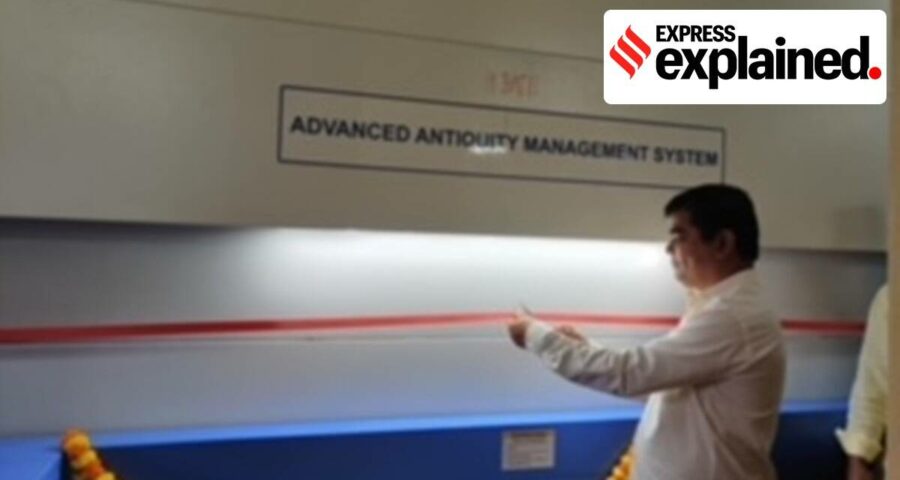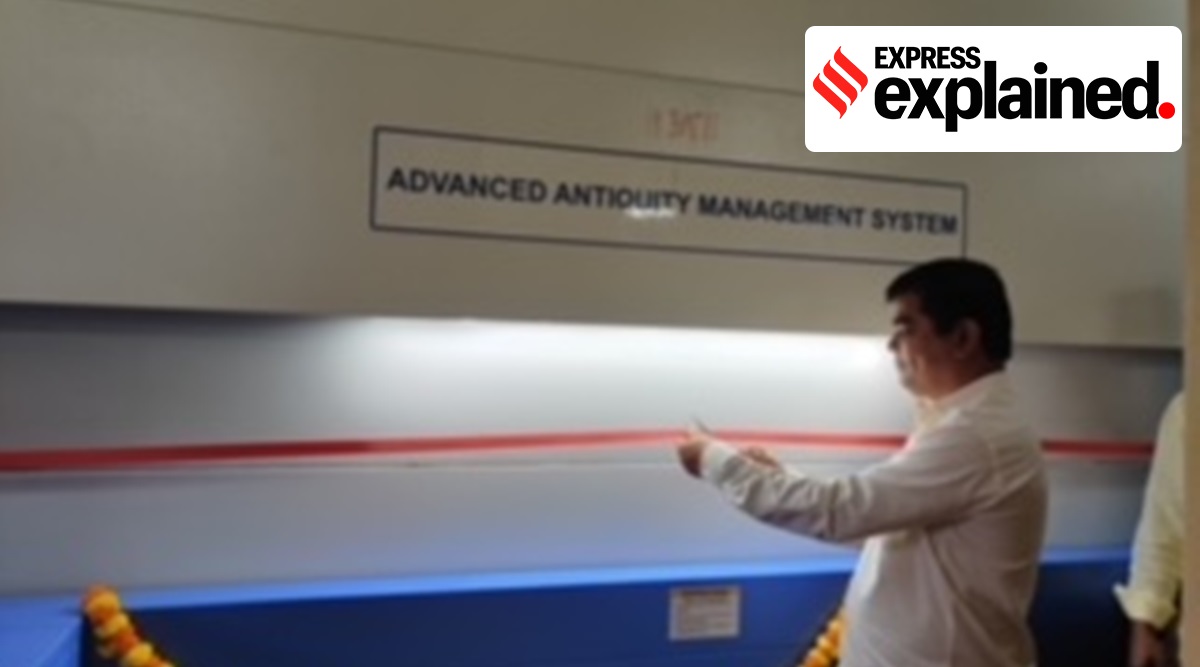The system that catalogues 83 antiquities at present is aimed at providing quick information about an antiquity linked to the software, saving storage space and ensuring improved preservation of the objects of historical significance.
The Directorate of Archives and Archaeology (DAA) of the Goa government inaugurated the Advanced Antiquities Management System on Tuesday that it claimed was the first such system in the country for storage of antiquities. The system that catalogues 83 antiquities at present is aimed at providing quick information about an antiquity linked to the software, saving storage space and ensuring improved preservation of the objects of historical significance.
Newsletter | Click to get the day’s best explainers in your inbox
What is the Advanced Antiquities Management System?
The AAMS is a software-driven automated storage used for the storage of various objects. So far it has been used for storage of industrial equipment but the decision of Goa’s DAA to use it for storing valuable antiquities is the first such in the country, it said. The AAMS will ensure safety of antiquities, clean storage space, access control and data management and also enhance utilisation of space. With antiquities preserved within the system, it will provide access to these in one place with the help of a screen on which the preserved antiquities can be searched and accessed within the system for viewing. It will also provide information about the age of the antiquity, the material it is made of and its brief history.
How does the system work?
The AAMS placed at Goa’s DAA in Panaji, looks like a large, closed container, about 3 metres tall. It has eight trays with a capacity of 350 kg each. When an antiquity is searched on the screen, the trays concealed inside the system move like a Ferris wheel and the tray bearing the antiquity searched, opens for the user to view the object. The screen provides information about the object. Shailendra Phatak of Pune-based I-Tech Business Solutions that bagged the contract for the AAMS, said that the design was completely indigenous. The system, however, is so far available offline as required by the DAA. It cannot be remotely accessed.
What are the various antiquities stored in the system?
At present, there are 83 antiquities in the system the oldest one being a tenth century Shivlinga, said Dr Varad Sabnis, Assistant Superintending Archeologist at the DAA. It also includes 12 sculptures found under a waterfall in the Ladfem village in North Goa’s Bicholim, remains of a 13th century temple in South Goa’s Navelim. There are also 18th century artifacts found at the Allorna Fort including glasses made in Germany and Holland, said Sabnis.
Who will be able to use the AAMS?
The system will mostly benefit researchers and students permitted access by the Directorate of Archives and Archaeology (DAA) in Goa and officials of the department. Students researching various archaeological subjects often seek access to antiquities in the care of the Directorate. Unlike a manual log of these antiquities, a click on the screen attached to the system will give the user information about the antiquity immediately and it can also be updated based on latest information about the antiquity. This is also expected to benefit the DAA as it will save storage space, provide protection from dust and temperature control. Inaugurating the system that cost Rs 27 lakh, Goa deputy chief minister Chandrakant Kavlekar said there was a need for advanced technology for the maintenance of heritage objects. He also said that the Goa government plans to introduce similar storage for six crore archival documents in the state.
📣 JOIN NOW 📣: The Express Explained Telegram Channel
What has the system been used for before?
Arti Phatak of I-Tech Business Solutions said that they have earlier created the system for a number of clients including those in the defense sector for preservation of various items and mainly documents. She said they had designed 38 systems for the Pune University for storage of answer sheets, storage of service records for the Police Headquarters in Hyderabad and preservation of land records for government offices.
Source: Read Full Article


